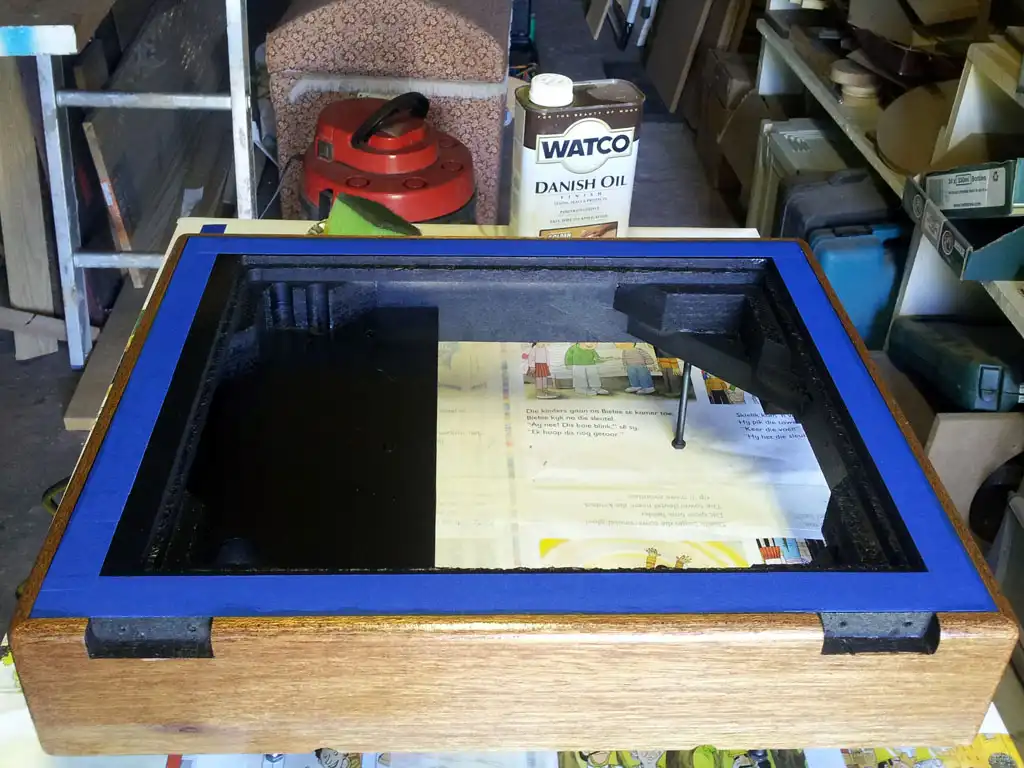Choosing between hard wax oil and Danish oil can be like chocolate and peanut butter. Both oils have several great benefits, but each has a distinct function. Hard wax oil cleans and protects by forming a lubricating film over wood, stone, and metal, while Danish oil seals out moisture and creates a protective coating on interior wood.
Overview of hard wax oil
Hardwax oil is often made of vegetable oils that have been combined with wax. These oils can use more than one type of wax and often have additional chemicals that provide protective benefits for wood. It combines various solvents, drying agents, and pigments that preserve wood color. These waxes originally came from European and have since become famous worldwide within the woodworking community. Consumers appreciate Hardwax oil because it finishes wood in an aesthetically pleasing way. It helps the finish to look natural and avoids the modern “plastic” look.

Uses
It is helpful for wood flooring, wood millwork, wood furniture, wood countertops, wood cabinetry, wooden toys, and wooden food presentation platters. If you want to get creative, you can use it on other wood-like substrates like cork or wood fiber panels.
How many coats of hard wax oil
You should not exceed two coats of hard wax oil.
Advantages
- Provides wood with a shallow level of sheen.
- It will keep the wood looking and feeling natural for longer.
- It doesn’t feel like plastic as a film doesn’t build.
- Eco-friendly option.
- You can choose from a variety of colours.
Disadvantages
- Highly susceptible to dirt and spot retention/
- I can’t handle water stains for long periods.
Overview of danish oil
Uses
Danish oil is the top option for wood that has yet to be treated. Use Danish oil on any new wood you have been working on. It is not a very adaptable oil that you can place on top of a previous varnish. When you compare it to linseed oil, you will find that Danish oil will dry much faster. This means it is thinner and is meant to penetrate wood rather than seal it. The average drying time is estimated at approximately 15 minutes.

How many coats of danish oil
One layer should be sufficient for Danish oil. This choice is best to avoid producing a thick and durable coating on the wood.
Advantages
- Only need a single layer of coating
- The oil will be dry in about 15 minutes.
- Cost-effective option.
- Protects from the inside.
- Long-term use.
Disadvantages
- Won’t work well with pre-treated wood.
- Doesn’t protect well against water & moisture.
Applying hard wax oil to furniture
When applying hard wax oil to furniture, the key is to flood it onto the wood. These oils are often thin and need extra dosages to prevent the surface from drying. Hardwax oils will often be quickly absorbed. It would help if you had a timeline of about 10-15 minutes before the oil dries. This quick-dry feature means it is essential to rush. When you are finished applying the oil, wipe off everything on the furniture. The excess oil that hasn’t been absorbed must be dealt with to provide a smoother and richer finish. Once complete, repeat the process. On the second time, you will want to sand the oily wood with fine wet-and-dry sandpaper. We use this method to allow the tiny pores to be filled. They will be filled with oil and wood dust, making them more durable and smoother.
How to apply hard wax oil to the floor
- The first step is to always rub towards the grain. Ensure that you always work in the direction of the grain to keep the finish tidy.
- The oil is very thin; therefore, make sure that each coat you apply is even. Use broad and long strokes that are evenly applied to the entire floor.
- The oil will need to dry quickly. Therefore, you should ensure that all doors and windows are open for better airflow.
- It would help if you aimed to apply only one coat per day. Leave the oil dry for at least 3 to 4 hours between coats if there is a rush.
- Sand the floor, if possible, between coats.
Danish oil finishing techniques
Danish oil is a thin oil and varnish mixture. Make sure to apply a large amount of oil to the wood. Give the wood 15 minutes to absorb the oil thoroughly. When this period elapses, wipe off the surface and reapply the oil. This oil has a brilliant finish which means you should only add one coat per day. The finish will become thick, beautiful, and durable as you work.
Can you use hard wax oil over Danish oil?
It is not advisable to use hard wax oil over Danish oil. Danish oil is not very compatible and is designed for use on raw wood with no treatment history. Applying hard wax oil over Danish oil could lead to a very thick and undesirable finish to the wood that will be difficult to remove if need be.
Does hard wax oil seal wood?
Hard wax oil is mainly a penetrative oil that tries to embody some of woodwax’s wood pore sealing qualities. Many consumers choose this option because it is thin and appropriate for finishing indoor furniture. Its protective qualities can match varnish, but the oils are still only a blend of natural oils.
What does hard wax oiled mean?
Hard wax oiled can be thought of similarly to traditional oil. This term means your wood finish also has a wax component to it. This extra wax component will make the wood less susceptible to water damage and sheen. The wax fills the pores of the timber. The oil/wax blend hardens to help form a protective layer against moisture. This feature adds strength and durability to the wood.
What is better for wood wax or oil?
Wax needs continuous maintenance to avoid becoming dull over time. This requires you to reapply the wax often. The high level of care makes it a more costly option than oil for furniture. Furniture is used frequently and therefore needs constant protection. It is best to go with wax for wooden objects on display. Oil can provide better heat resistance; therefore, it is better for outdoor wooden projects.
- 6 Tips To Craft The Perfect DIY Woodworking Project - August 1, 2022
- Six Reasons You Need an Air Filter In Your Wood Workshop - August 1, 2022
- American made wood lathes - May 26, 2022